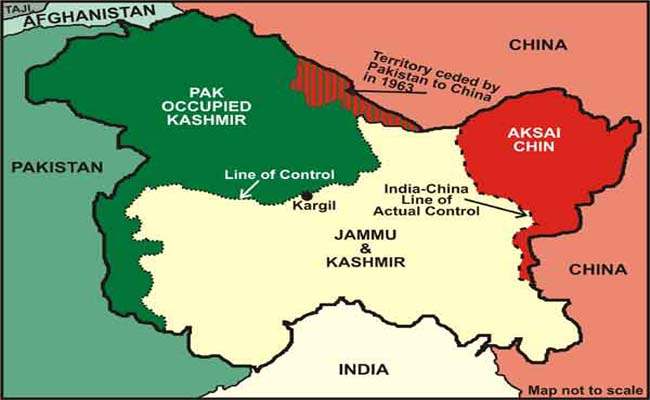JK News Today Commentary
It is as simple as that- the search on Google for Jammu and Kashmir springs up millions of results and when the same search is zeroed in to what Pakistan calls its occupied territory of the State as “ Azad Kashmir”, there are very few results on the computer screen. The results refuse to increase even if the search button is clicked hundreds of times. It is no exaggeration . Anyone can see this by making an effort on the Internet .
The simple answer is the region under the occupation of Pakistan is denied access to journalists and outsiders . Hence ,what happens there is opaque . Pakistan government has kept it off from the worldview. There is every possibility that if this region comes under the global lens , many ugly realities would come to fore. And, Pakistan , a state floundering by its self-created problem of terrorism , wants to keep a lid over it.
There is a history to it – the region was captured by Pakistan by sponsoring the invasion of the princely state of Jammu and Kashmir in 1947 then governed by Dogra king Maharaja Hari Singh . The purpose of the attack was much greater, to annex the whole of Kashmir . But the accession of the State to India followed by the arrival of Indian troops to repulse the invaders foiled the plans of Pakistan . These plans are now being implemented by Pakistan through proxy war , and the Pakistan occupied Kashmir is home to hundreds of militants receiving training in arms and ammunition to bleed India in Kashmir.
That the tribesmen invasion was a reality , not some kind of twisted history is authenticated by the men who now live in PoK.
BBC quoted a number of elders of the region saying that it was indeed a murderous campaign by tribesmen to loot and plunder who killed non-Muslims and captured women as a trophy . BBC in its report titled “ Partition 70 years on : When Tribal warriors invaded Kashmir.” The report has been written by M Ilyas Khan , BBC’s North-West Pakistan reporter . The report was filed on October 22 October 2017.
It reads : “ Gohar Rehman , a World War Two veteran from Battargram 80km north-west of Garhi Habibullah, was in the column that crossed from Dub Gali.”
“We knew the area so we led one group through this shorter route, on foot,” he says.
“The bulk of the Frontier tribesmen – Wazir, Mahsud, Turi, Afridi, Mohmand, the Malakand Yusufzais – went via the longer but easier Lohar Gali route in lorries and trucks.”
Around 2,000 tribesmen stormed Muzaffarabad that morning and easily scattered the Kashmir state army deployed there.”
Flushed with victory, the tribesmen got down to wanton looting and arson.
“They plundered the state armoury, set entire markets on fire and looted their goods,” Mr Rahman says.
“They shot everyone who couldn’t recite the kalima – the Arabic-language Muslim declaration of faith. Many non-Muslim women were enslaved, while many others jumped in the river to escape capture.”
The streets were littered with signs of mayhem – broken buildings, broken shop furniture, the ashes of burnt goods and dead bodies, including those of tribal fighters, state soldiers and local men and women. There were also bodies floating in the river.
The raiders spent about three days in Muzaffarabad before sense prevailed and the leaders urged them to move on towards Srinagar, the state capital some 170km to the east.
From here, one column drove in trucks down the Jhelum river, breezing past Uri and reaching Baramulla where another round of looting and arson ensued.”
That explains Pakistan’s plans . And now this region is so isolated that only Pakistanis can travel to tell some elements of truth about Pakistan ‘s ill intentions on Kashmir. ( to be continued)




